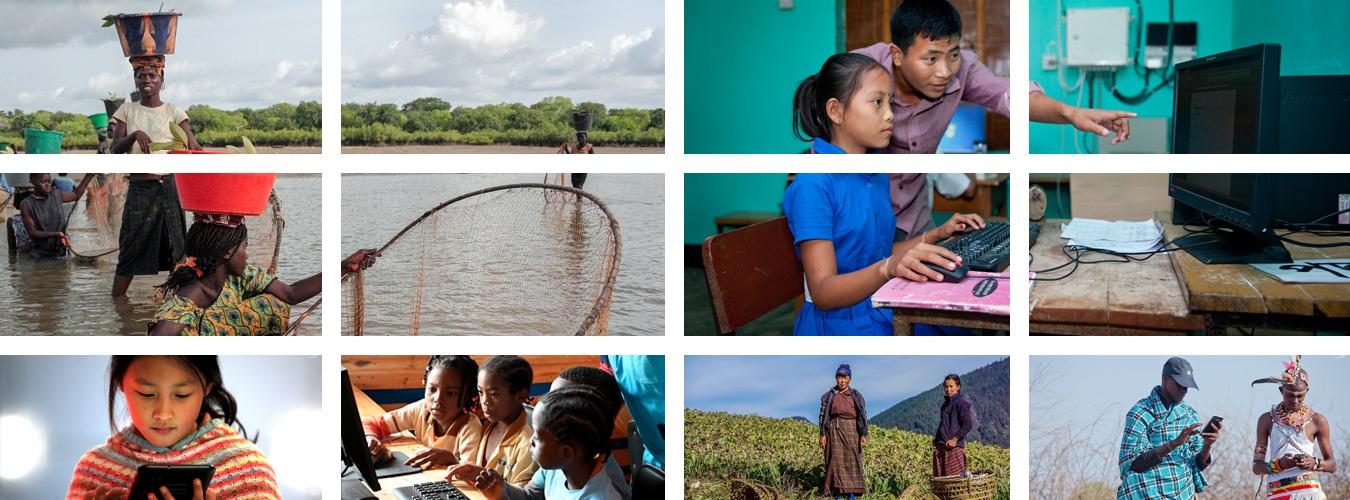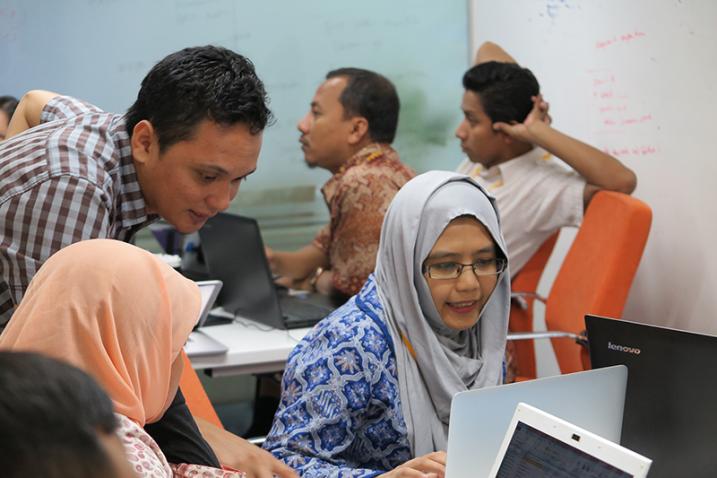Least developed countries need digital investment
Over the past decade, the connectivity challenge has become more complex and demanding. Bringing everyone online is no longer enough. Meaningful connectivity – the possibility to enjoy a safe, satisfying, enriching, productive and affordable online experience – is the new imperative. For least developed countries (LDCs), this remains a major challenge. The digital divide between LDCs and the rest of the world shows little sign of narrowing. The risk is all too evident. As the world becomes increasingly adept at leveraging the Internet for value creation, LDCs risk falling further behind.
This year, World Telecommunication and Information Society Day (WTISD) focuses on “Empowering the least developed countries through information and communication technologies.” The International Telecommunication Union (ITU) calls on the public and private sectors to make pledges for universal connectivity and digital transformation in these countries through its Partner2Connect Digital Coalition.
Mid-way through the agenda to fulfil the UN Sustainable Development Goals (SDGs) by 2030, the least developed countries (LDCs) remain the world’s greatest untapped resource, whose needs must be addressed to achieve the SDGs. Investment in these young, vibrant countries can drive sustainable growth for generations. Together, let’s make 2023 a year of progress for digital transformation in the least developed countries.
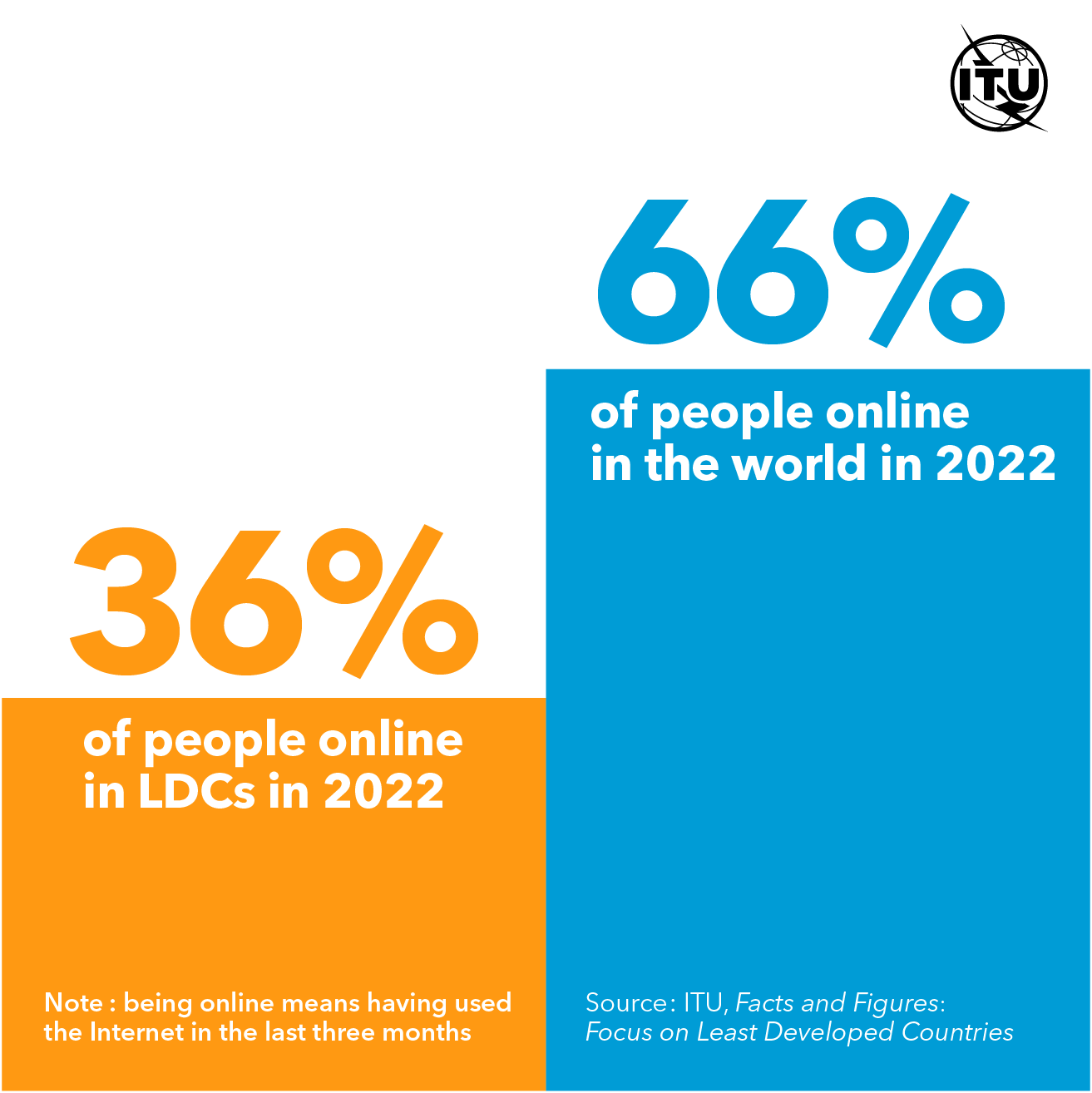
Measuring digital development
In 2022, an estimated 407 million people in least developed countries (LDCs) were using the Internet, accounting for 36 per cent of the population, compared to 66 per cent globally. The 720 million people still offline in LDCs account for 27 per cent of the global offline population, even though the LDC population accounts for only 14 per cent of the world’s population.
ITU’s Measuring digital development – Facts and Figures: Focus on Least Developed Countries shows that universal and meaningful connectivity remains a distant prospect for LDCs.
Background
The purpose of World Telecommunication and Information Society Day (WTISD) is to help raise awareness of the possibilities that the use of the Internet and other information and communication technologies (ICTs) can bring to societies and economies, as well as of ways to bridge the digital divide. 17 May marks the anniversary of the signing of the first International Telegraph Convention and the creation of the International Telecommunication Union (ITU).
History
World Telecommunication Day
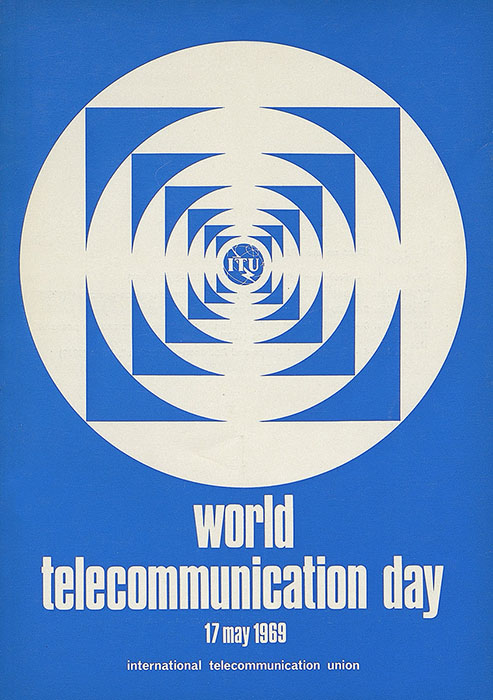
World Telecommunication Day has been celebrated annually on 17 May since 1969, marking the founding of ITU and the signing of the first International Telegraph Convention in 1865. It was instituted by the Plenipotentiary Conference in Malaga-Torremolinos in 1973 as Resolution 46.
World Information Society Day
In November 2005, the World Summit on the Information Society called upon the UN General Assembly to declare 17 May as World Information Society Day to focus on the importance of ICT and the wide range of issues related to the Information Society raised by WSIS. The General Assembly adopted a resolution (A/RES/60/252) in March 2006 stipulating that World Information Society Day shall be celebrated every year on 17 May.
World Telecommunication and Information Society Day
In November 2006, the ITU Plenipotentiary Conference in Antalya, Turkey, decided to celebrate both events on 17 May as World Telecommunication and Information Society Day. The updated Resolution 68 invites Member States and Sector Members to celebrate the day annually by organizing appropriate national programmes with a view to:
- stimulating reflection and exchanges of ideas on the theme adopted by the Council
- debating the various aspects of the theme with all partners in society
- formulating a report reflecting national discussions on the issues underlying the theme, to be fed back to ITU and the rest of its membership
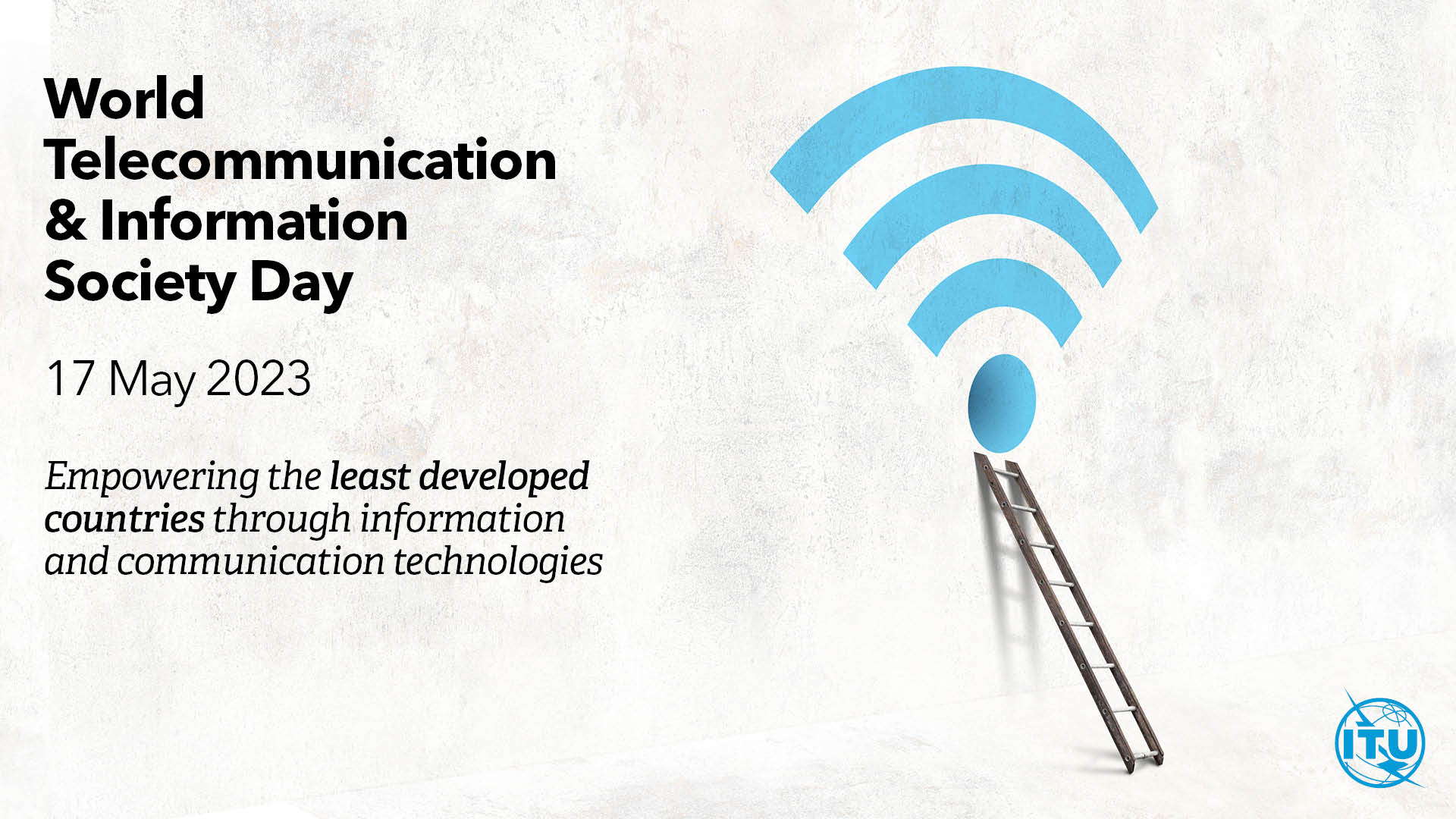
From backgrounders to graphics, help us raise awareness of the challenges and successes of least developed countries on your social media.
We also invite you to celebrate ITU’s birthday on 17 May either at its Headquarters, or remotely, starting 2.30 pm CEST. Take a look at the programme and register!
Listen
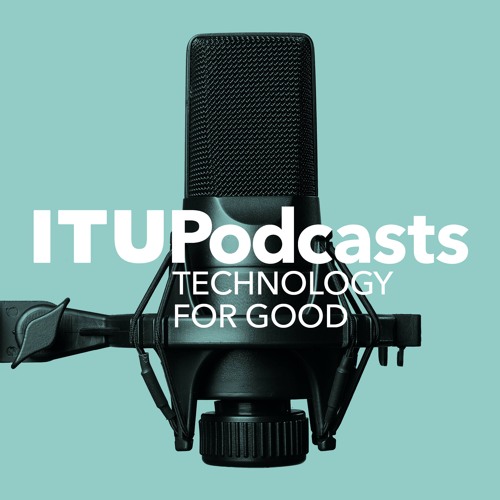
Technology for Good - is an ITU series that focuses on how technology is helping to shape the world around us.
Resources
Useful websites
Documents
- World Telecommunication Day (ITU, Malaga-Torre Molinos, 1973)
- World Summit on the Information Society (General Assembly, 2006)
- World Telecommunication and Information Society Day (ITU, Antalya, 2006)

